Leica M (Typ 240): Close-Up Experiences - Part 2: Practice I
Introduction | Close-up Lenses | Achromats | Extension Tubes | Combining Extension Tubes and Achromats | Conclusions | Final Word | References
Archive
This page presents my practical experiences with close-up shots using close-up lenses or achromats and extension tubes with the Leica M (Typ 240) in live view mode.
See page Close-Up Options (Live View) - Part 3: Practice II for my practical experiences with extension bellows and page Close-Up Options (Live View) - Part 4: Practice III for my practical experiences with a macro lens.
See also page Close-Up Options (Live View) - Part 1: Overview for an overview of the options that you have for close-up shots when using the Leica M (Type 240) in live view mode and pages Close-Up Options (Live View) - Part 5: Samples I and Close-Up Options (Live View) - Part 6: Samples II, and Close-Up Options (Live View) - Part 7: Samples III for sample close-up photos with the Leica M (Typ 240).
Note: Page Close-Up Behavior of the M-Mount Lenses describes the close-up characteristics of the lenses when used without any close-up options.
Introduction
On page Close-Up Options (Live View) - Part 1: Overview, I mentioned that rangefinder camera are not well suited to close-up photography because of the parallax. With the Leica M (Typ 240), however, this has changed, because Leica added live view to the camera. With respect to close-up/macro photos, in live view mode the M behaves like a system camera (or like a DSLR) and can use all the techniques that these can use: close-up lenses, extension tubes, extension bellows, and macro lenses. On that page, I provide an overview of the options that you have for close-up shots when using the Leica M (Type 240) in live view mode. On this page and two other pages (see on top of the page), I would like to present my practical experiences in this domain, which are, of course, of anecdotic nature.
Because of the length of this page, I prepared three pages for presenting sample close-up photos (see on top of the page).
Calculating Magnification
From dkpeterborough (l-camera-forum) I adopt the way how magnification is calculated:
- Sensor width / object width = 35.8 [mm] / object width [mm] for the Leica M (Type 240) full format sensor.
Below, I will use this formula for calculating the achievable magnification under various conditions.
Close-up Lenses
My Close-up Lens
I bought a B+W +5 close-up lens for my Leica X Vario. Therefore, it has a 43 mm filter diameter. The lens fits directly two of my lenses, the Zeiss Biogon 35mm f/2.8 and the Voigtländer Color Heliar 75mm f/2.5. I therefore tested it with these lenses.
Calculating Magnification
I took quick-and-dirty test shots (see below) to calculate magnification for the following conditions:
- Lens: Zeiss Biogon 35mm f/2.8, Voigtländer Color Heliar 75mm f/2.5
- Distance: closest and infinity
- Diopters: +5 (1 B+W +5 close-up lens 43 mm filter thread)
The following table summarizes my results for the B+W +5 lens:
Zeiss Biogon 35mm
f/2.8 mm |
Voigtländer
Color Heliar 75mm f/2.5 |
B+W +5 |
|||
Distance |
Distance |
# Lenses | Diopters | ||
| Infinity | 0.7 m (closest) | Infinity | 1.0 m (closest) | ||
| 172 mm 0.21 = 1:4.8 approx. 1:5 |
139 mm 0.26 = 1:3.9 approx: 1:4 |
94 mm 0.38 = 1:2.6 approx. 1:2.6 |
72 mm 0.5 = 1:2.0 approx. 1:2 |
1 | +5 |
Notes: Minimum object distance taken from the test shots below; maximum object size roughly estimated; magnification ratios calculated from the exact values via inverse function
Below are test shots for illustration that I made with aperture wide open. Please note that they were only made for estimating magnification, not for demonstrating the achievable quality.
Test Shots
Zeiss Biogon 35mm f/2.8
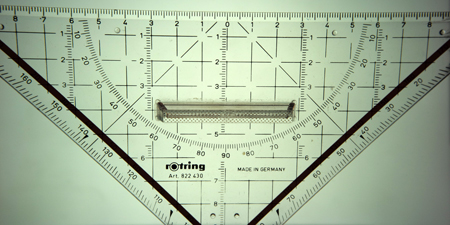 |
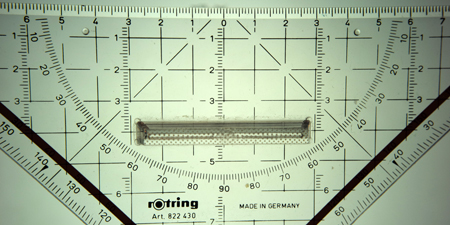 |
Photos: Test shots with Zeiss Biogon 35mm f/2.8 and one +5 BW lens; distance set to infinity (left) or closest distance (right)
The photos show slight to medium pincushion distortion.
Voigtländer Color Heliar 75mm f/2.5
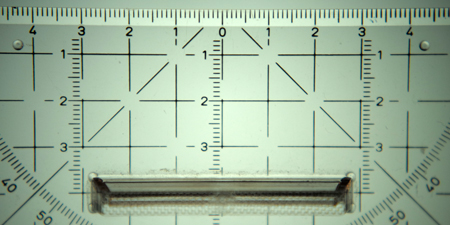 |
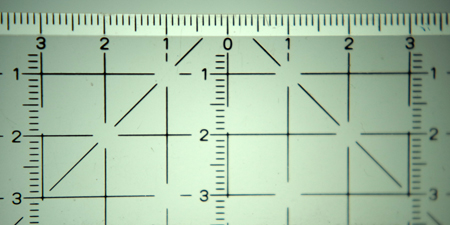 |
Photos: Test shots with Voigtländer Color Heliar 75mm f/2.5 and one +5 BW lens; distance set to infinity (left) or closest distance (right)
The photos show slight pincushion distortion.
Summary
With one B+W +5 lens, quite remarkable magnifications can be achieved for lenses with focal lengths from 50 mm and longer. Particularly with the Voigtländer 75 mm lens magnifications in the 1:2 range are possible. The 35 mm lens covers an area of about a postcard.
The pincushion distortion seems to be lower than for the Marumi +5 achromat. Only real world tests will show, whether the resulting quality is indeed acceptable and how the lens compares with the Marumi +5 achromat (on the Leica X Vario, the achromat was slightly better).
Achromats
My Achromats
Here, I will discuss my Marumi +5 achromats. I mentioned already that these have a filter thread of 52 mm (which is the minimum size for these achromats; Raynox offers smaller filter threads, but I learned about this too late...). Therefore, I bought a Quenox 43-52 mm step-up ring for the Leica X Vario and recently also a Quenox 46-52 mm step-up ring:
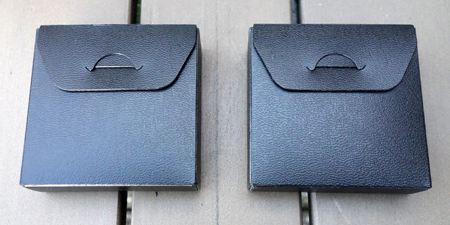 |
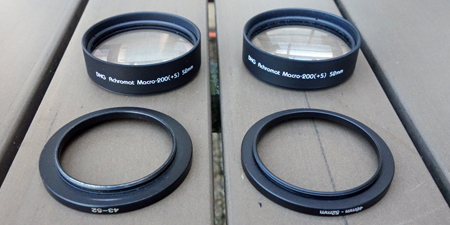 |
|
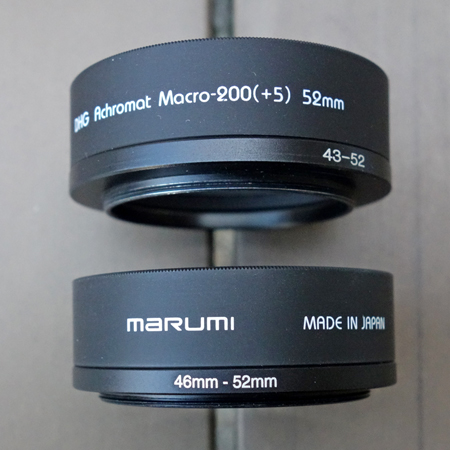 |
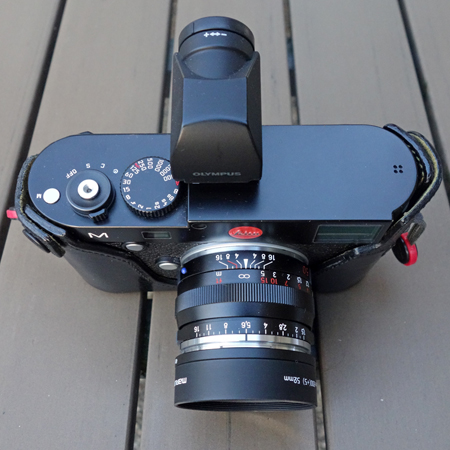 |
Photos: Marumi +5 achromats with step-up rings and at the camera
These rings can be used on my following lenses.
- 43-52 mm step-up ring: Zeiss Biogon 35mm f/2.8, Voigtländer Color Heliar 75mm f/2.5
- 46-52 mm step-up ring: Zeiss Biogon 21mm f/4.5, Zeiss Sonnar 50mm f/1.5
Calculating Magnification
I took quick-and-dirty test shots (see below) to calculate magnification for the following conditions:
- Lens: Zeiss Biogon 21mm f/4.5 (46-52 mm step-up ring), Minolta M-Rokkor 28mm f/2.8 (40.5-43 mm and 43-52 mm step-up rings), Zeiss Biogon 35mm f/2.8 (43-52 mm step-up ring), Zeiss Sonnar 50mm f/1.5 (46-52 mm step-up ring), Voigtländer Color Heliar 75mm f/2.5 (43-52 mm step-up ring)
- Distance: closest and infinity
- Diopters: +5 (1 Marumi +5 achromat), +10 (2 Marumi +5 achromats)
The following table summarizes my results for the Marumi +5 achromats:
Minolta M-Rokkor
28mm f/2.8* |
Zeiss Biogon 35mm
f/2.8 |
Marumi +5 Achromat | |||
Distance |
Distance |
# Achrom. | Diopters | ||
| Infinity | 0.8 m (closest) | Infinity | 0.7 m (closest) | ||
| 225 mm 0.16 = 1:6.3 approx. 1:6.5 |
176 mm 0.2 = 1:4.9 approx: 1:5 |
180 mm 0.2 = 1:5.0 approx. 1:5 |
139 mm 0.26 = 1:3.9 approx. 1:4 |
1 | +5 |
| 110 mm 0.325 = 1:3.1 approx. 1:3 |
101 mm 0.35 = 1:2.8 approx. 1:2.8 |
90 mm 0.4 = 1:2.5 approx. 1:2.5 |
79 mm 0.45 = 1:2.2 approx. 1:2.2 |
2 | +10 |
Zeiss Sonnar 50mm f/1.5 |
Voigtländer
Color Heliar 75mm f/2.5 |
Marumi +5 Achromat | |||
Distance |
Distance |
# Achrom. | Diopters | ||
| Infinity | 0.9 m (closest) | Infinity | 1.0 m (closest) | ||
| 130 (132**) mm 0.275 = 1:3.6 approx. 1:3.6 |
104 (103**) mm 0.344 = 1:2.9 approx: 1:3 |
92 mm 0.39 = 1:2.56 approx. 1:2.5 |
72 mm 0.5 = 1:2 approx. 1:2 |
1 | +5 |
| 67 (68**) mm 0.534 = 1:1.87 approx. 1:2 |
58 mm 0.617 = 1:1.6 approx. 1:1.6 |
47 mm 0.76 = 1:1.3 approx. 1:1.25 |
40 mm 0.895 = 1:1.12 approx. 1:1.1 |
2 | +10 |
Notes: Minimum object distance taken from the test shots below; maximum object size roughly estimated; magnification ratios calculated from the exact values via inverse function
*) With additional 40.5-43 mm adapter ring; second series of test shots not
used for calculations.
**) Values taken from second series of test shots, not used in calculations.
Test Shots
Below are test shots for illustration that I made with aperture wide open. Please note that they were only made for estimating magnification, not for demonstrating the achievable quality.
Zeiss Biogon 21mm f/4.5 (Not used in Calculations)
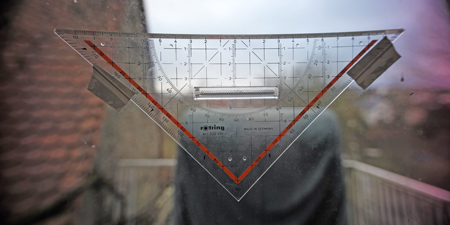 |
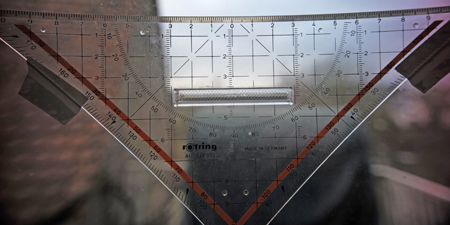 |
|
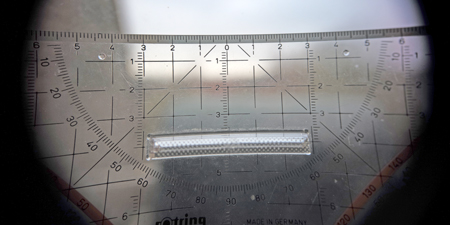 |
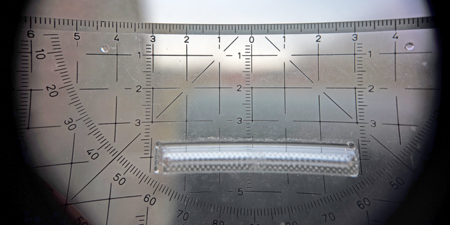 |
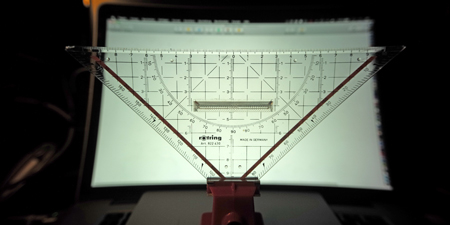 |
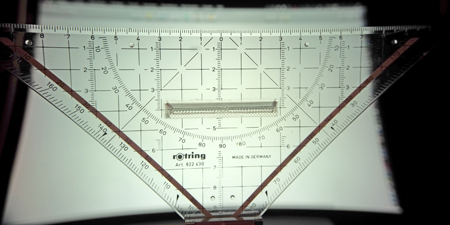 |
|
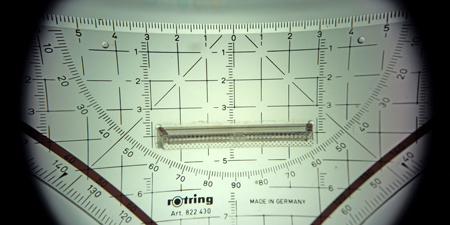 |
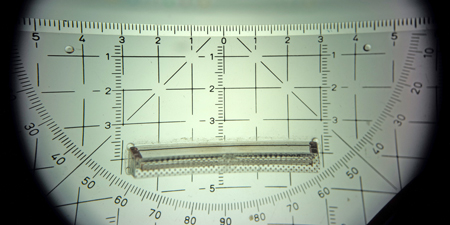 |
Photos: Two sets of Test shots with Zeiss Biogon 21mm f/4.5 and one +5 Marumi achromat (top row) and two Marumi +5 achromats (= +10 diopters); distance set to infinity (left column) or closest distance (right column)
The photos show strong pincushion distortion, strong vignetting for two achromats, and color shading. Therefore, I did not use this lens in the calculations above. I would not use it for real close-up shots with achromats either (except for "special effects").
Minolta M-Rokkor 28mm f/2.8
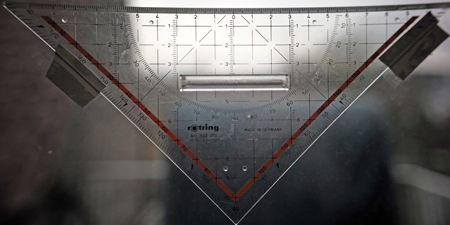 |
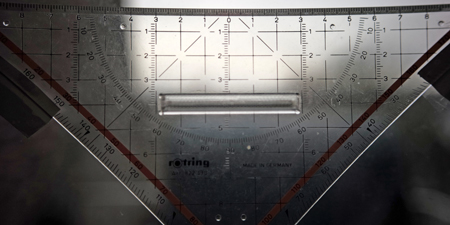 |
|
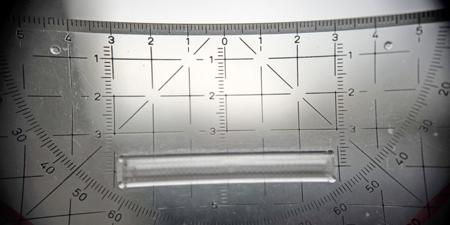 |
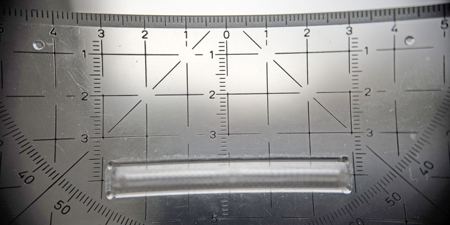 |
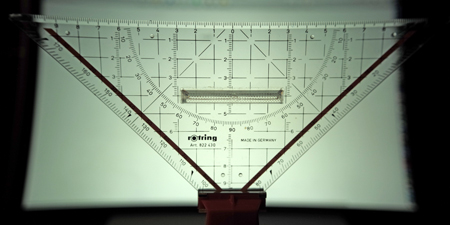 |
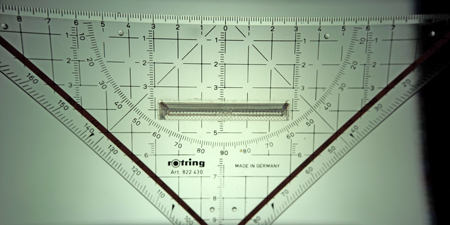 |
|
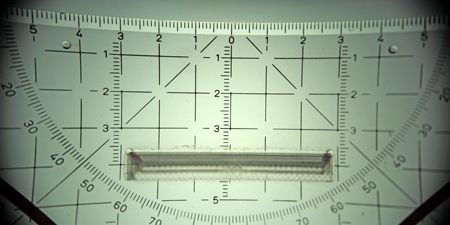 |
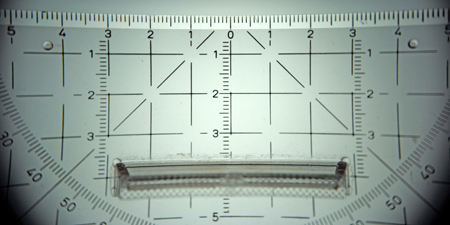 |
Photos: Two sets of test shots with Minolta M-Rokkor 28mm f/2.8 and one +5 Marumi achromat (top row) and two Marumi +5 achromats (= +10 diopters); distance set to infinity (left column) or closest distance (right column)
The photos show strong pincushion distortion and fairly strong vignetting in the original photos (not shown here). Not really useable for me...
Zeiss Biogon 35mm f/2.8
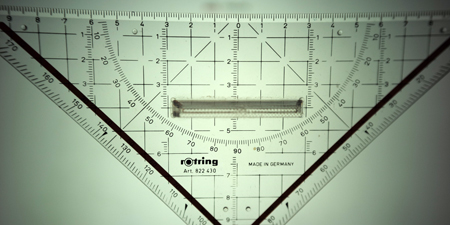 |
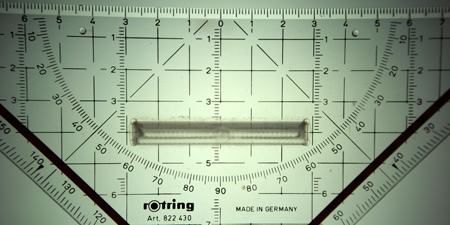 |
|
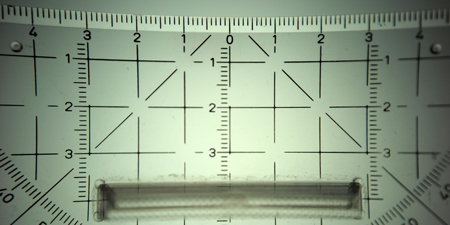 |
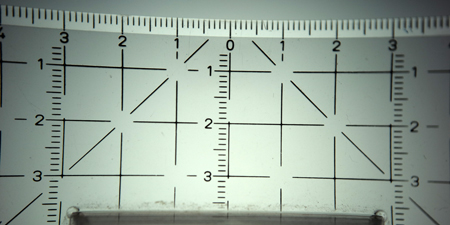 |
Photos: Test shots with Zeiss Biogon 35mm f/2.8 and one +5 Marumi achromat (top row) and two Marumi +5 achromats (= +10 diopters); distance set to infinity (left column) or closest distance (right column)
The photos show strong pincushion distortion. I would not use this lens with achromats for close-up shots.
Zeiss Sonnar 50mm f/1.5
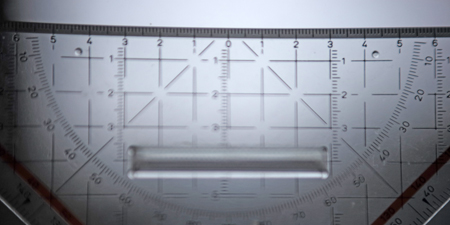 |
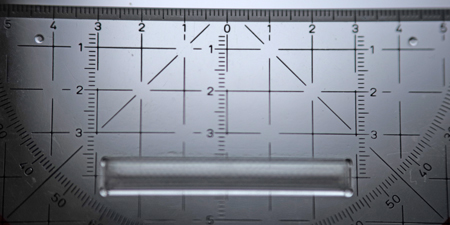 |
|
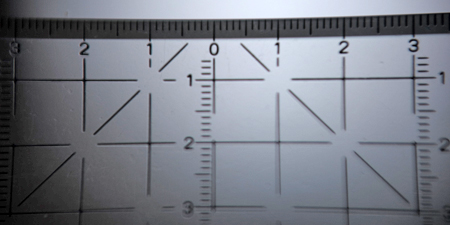 |
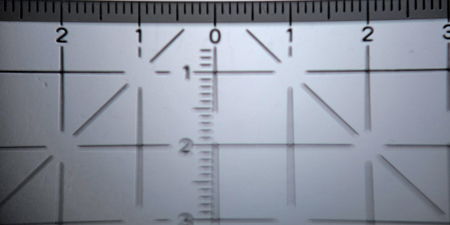 |
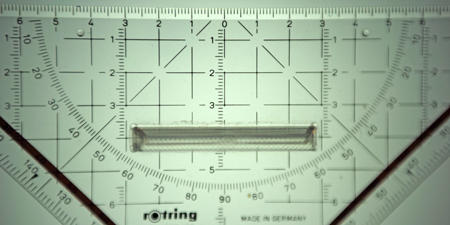 |
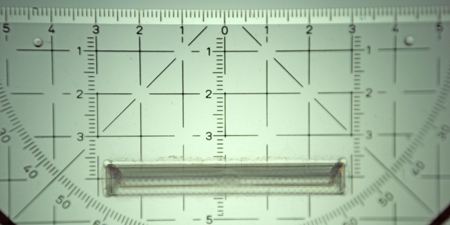 |
|
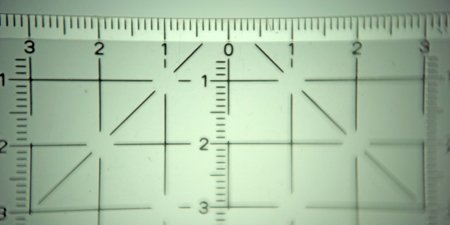 |
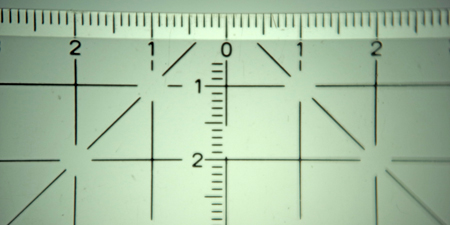 |
Photos: Two sets of test shots with Zeiss Sonnar 50mm f/1.5 and one +5 Marumi achromat (top row) and two Marumi +5 achromats (= +10 diopters); distance set to infinity (left column) or closest distance (right column)
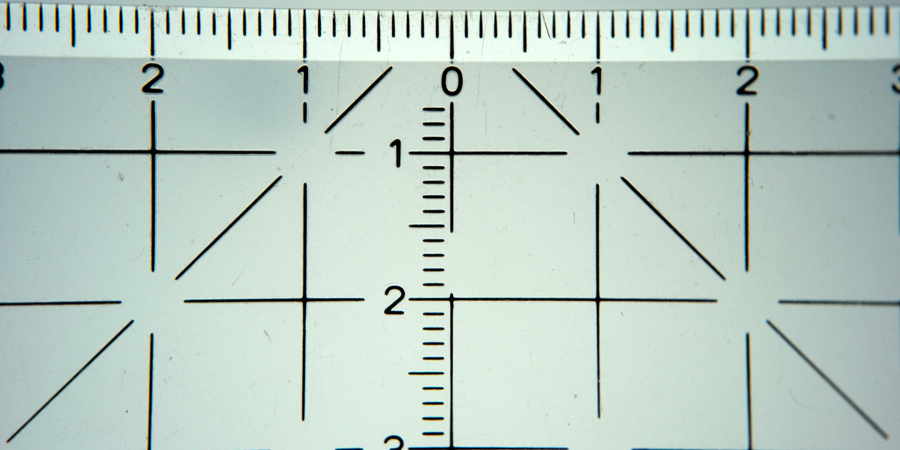
Photo: Test shots with Zeiss Sonnar 50mm f/1.5 and two +5 Marumi achromats (= +10 diopters); distance set to closest distance, aperture set to f/5.6
The photos show strong to medium pincushion distortion. Only real world photos can show whether this can be acceptable an certain motifs. The photo taken with an aperture value of f/5.6 shows that stopping down improves image quality dramatically.
Voigtländer Color Heliar 75mm f/2.5
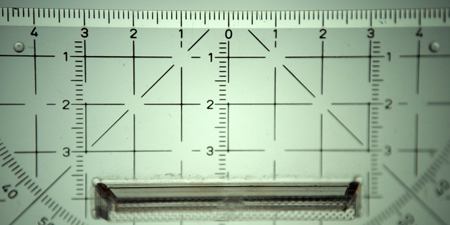 |
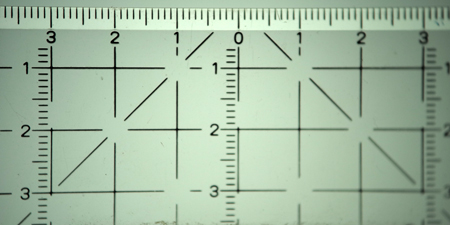 |
|
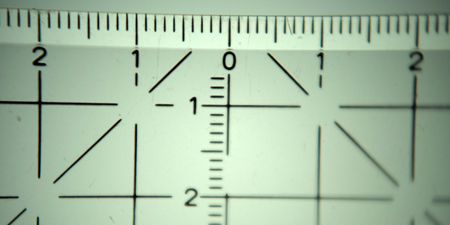 |
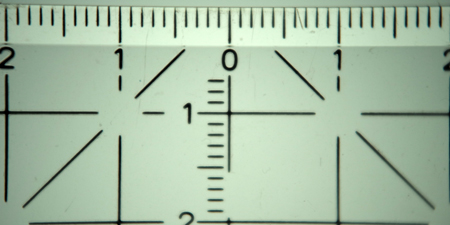 |
Photos: Test shots with Voigtländer Color Heliar 75mm f/2.5 and one +5 Marumi achromat (top row) and two Marumi +5 achromats (= +10 diopters); distance set to infinity (left column) or closest distance (right column)
The photos show strong to medium pincushion distortion. One Marumi achromat provides acceptable quality.
Summary
With one or two Marumi +5 achromats, quite remarkable magnifications can be achieved for lenses with focal lengths from 50 mm and longer. Particularly with the Voigtländer 75 mm lens, magnifications in the 1:2 range are possible, and one can even come close to 1:1 with two +5 achromats and this lens. Wide lenses not only show much lower magnifications, they also show strong vignetting, particularly when two achromats are being used. Other achromats may lead to better results, but the low magnification rules out wide angle lenses, anyway.
The strong pincushion distortion exhibited by all lenses is annoying. It seems to be a little bit lower, when distance is set to the closest possible value. Only real world tests will show, whether the resulting quality is indeed acceptable for certain motifs. I did some preliminary tests with small flowers and found these to be acceptable (I did that before these tests and thus, did not know of the distortions).
Extension Tubes
My Extension Tubes
I ordered a Quenox Extension Tube for Leica M (replaces the "extinct" Leica OUFRO) to get a smaller focusing distance for my M-mount lenses, particularly, for the Zeiss Sonnar 50mm f/1.5 lens.
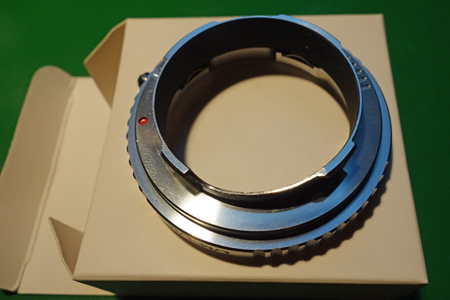 |
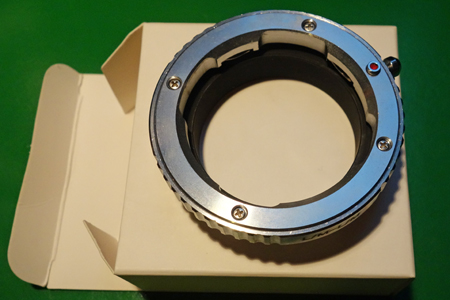 |
|
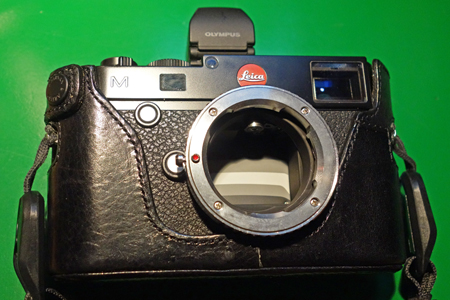 |
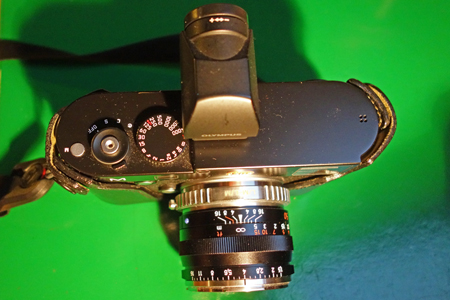 |
Photos: Quenox Extension Tube for Leica M - alone and attached to the camera (bottom row; with Zeiss Sonnar 50mm f/1.5 to the right)
I find the Quenox Extension Tube for Leica M a bit disappointing. It looks a bit roughly made and does not work as smoothly as expected. It is not "a joy to use" - at least, not for me. Maybe, some practice with it will help...
Calculating Magnification
I took quick-and-dirty test shots to calculate magnification for the following conditions:
- Lenses: Zeiss Biogon 21mm f/4.5, Leica Elmarit-M 21mm f/2.8 lens (added later), Leica Elmar-M 24mm f/3.8 lens (added later), Voigtländer Snapshot-Skopar 25mm f/4, Minolta M-Rokkor 28mm f/2.8, Zeiss Biogon 35mm f/2.8, Zeiss Sonnar 50mm f/1.5*, Voigtländer Color Heliar 75mm f/2.5, Leitz Elmar C 90mm f/4, Leitz Tele-Elmar 135mm f/4
- Quenox Extension Tube for Leica M
- Distance: closest and infinity
*) I performed two tests with the Zeiss Sonnar lens: a first preliminary test, and then a second test with many lenses, in which it was also included. Both tests lead to the same results.
The following table summarizes my results for the Quenox Extension Tube:
Lens > |
Zeiss Biogon 21mm
f/4.5 |
Leica Elmarit-M
21mm f/2.8 |
||
Distance > |
Infinity | 0.8 m (closest) | Infinity | 0.7 m (closest) |
Quenox Extension Tube for Leica M |
76 mm > 0.47 = 1:2.1 approx. 1:2.1 |
70 mm > 0.51 = 1:1.96 approx: 1:2 |
80 mm > 0.45 = 1:2.3 approx. 1:2.3 |
72 mm > 0.50 = 1:2.0 approx: 1:2 |
Lens > |
Leica Elmar-M
24mm f/3.8 |
Voigtländer
Snapshot-Skopar 25mm f/4 |
||
Distance > |
Infinity | 0.8 m (closest) | Infinity | 0.7 m (closest) |
Quenox Extension Tube for Leica M |
85 mm > 0.42 = 1:2.4 approx. 1:2.4 |
77 mm > 0.47 = 1:2.15 approx: 1:2.2 |
89 mm > 0.4 = 1:2.5 approx. 1:2.5 |
82 mm > 0.44 = 1:2.3 approx: 1:2.3 |
Lens > |
Minolta M-Rokkor
28mm f/2.8 |
Zeiss Biogon 35mm
f/2.8 |
||
Distance > |
Infinity | 0.8 m (closest) | Infinity | 0.7 m (closest) |
Quenox Extension Tube for Leica M |
103 mm > 0.35 = 1:2.9 approx. 1:3 |
93 mm > 0.385 = 1:2.6 approx.1:2.5 |
125 mm > 0.29 = 1:3.5 approx. 1:3.5 |
101 mm > 0.35 = 1:2.8 approx: 1:3 |
Lens > |
Zeiss Sonnar 50mm
f/1.5 |
Voigtländer
Color Heliar 75mm f/2.5 |
||
Distance > |
Infinity | 0.9 m (closest) | Infinity | 1.0 m (closest) |
Quenox Extension Tube for Leica M |
180 mm > 0.2 = 1:5 approx. 1:5* |
137 mm > 0.26 = 1:3.8 approx: 1:4* |
263 mm > 0.14 = 1:7.3 approx. 1:7 |
158 mm > 0.23 = 1:4.4 approx: 1:4.5 |
Lens > |
Leitz Elmar-C
90mm f/4 |
Leitz Tele-Elmar
135mm f/4 |
||
Distance > |
Infinity | 1.0 m (closest) | Infinity | 1.5 m (closest) |
Quenox Extension Tube for Leica M |
303 mm > 0.12 = 1:8.5 approx. 1:8.5 |
154 mm > 0.23 = 1:4.3 approx: 1:4.5 |
482 mm > 0.07 = 1:13.5 approx. 1:13.5 |
183 mm > 0.20 = 1:5.1 approx: 1:5 |
Notes: Minimum object distance taken from the test shots below; maximum object size roughly estimated; magnification ratios calculated from the exact values via inverse function
*) I performed two tests with the Zeiss Sonnar lens: a first preliminary test, and then a second test with many lenses, where it was also included. Both tests led to the same results.
Note: The data also apply to the no longer available Leica OUFRO / Leitz 16469Y, which the Quenox Extension Tube replaces.
Test Shots
Below are test shots for illustration that I made with aperture wide open (except for the Elmarit-M and Elmar-M). Please note that they were only made for estimating magnification, not for demonstrating the achievable quality.
Test Shots: Zeiss Biogon 21mm f/4.5
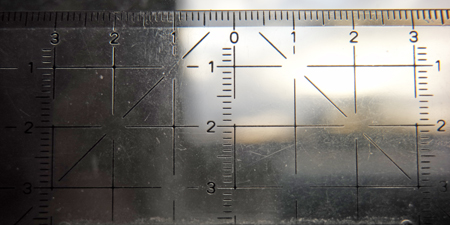 |
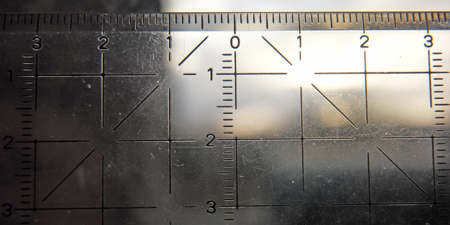 |
Photos: Test shots with Zeiss Biogon 21mm f/4.5 and Quenox Extension Tube for Leica M; distance set to infinity (left) or closest distance (right)
Test Shots: Leica Elmarit-M 21mm f/2.8
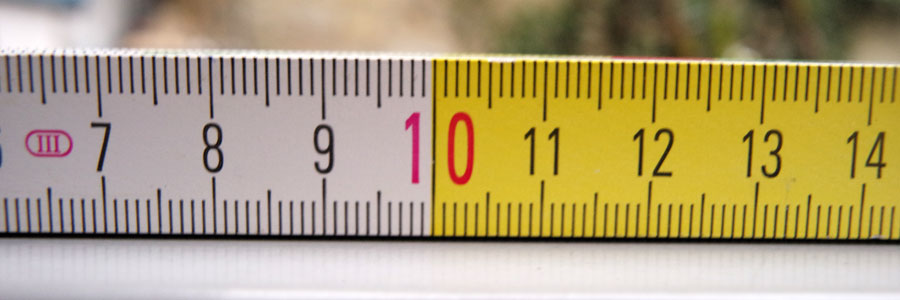 |
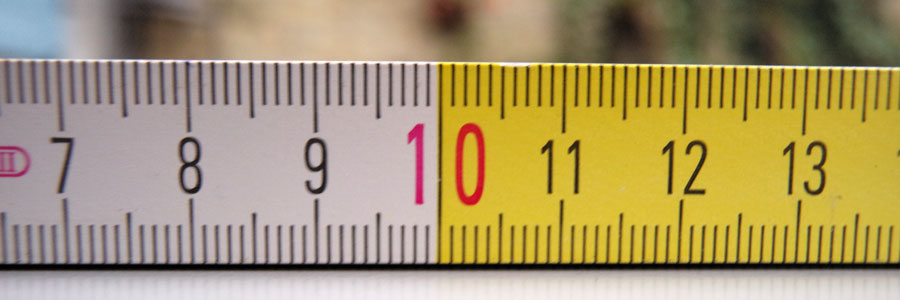 |
Photos: Test shots with Leica Elmarit-M 21mm f/2.8 and Quenox Extension Tube for Leica M; distance set to infinity (left) or closest distance (right)
Test Shots: Leica Elmar-M 24mm f/3.8
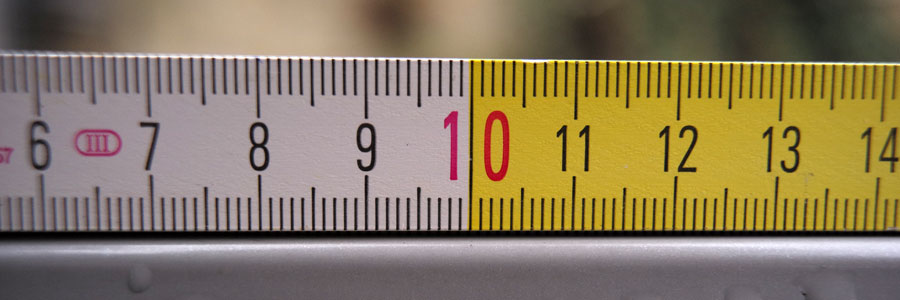 |
 |
Photos: Test shots with Leica Elmar-M 24mm f/3.8 and Quenox Extension Tube for Leica M; distance set to infinity (left) or closest distance (right)
Test Shots: Voigtländer Snapshot-Skopar 25mm f/4
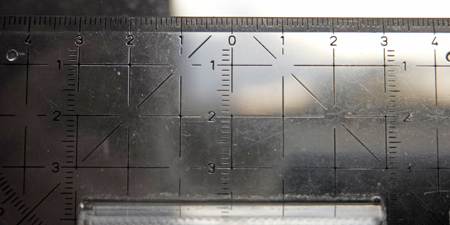 |
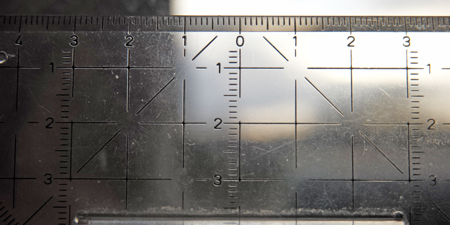 |
Photos: Test shots with Voigtländer Snapshot Skopar 25mm f/4 and Quenox Extension Tube for Leica M; distance set to infinity (left) or closest distance (right)
Test Shots: Minolta M-Rokkor 28mm f/2.8
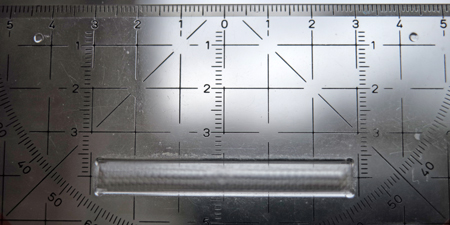 |
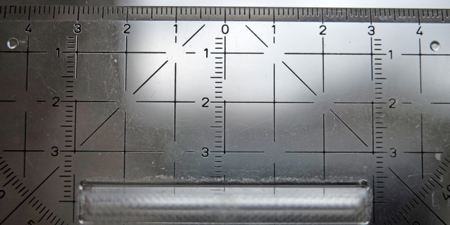 |
Photos: Test shots with Minolta M-Rokkor 28mm f/2.8 and Quenox Extension Tube for Leica M; distance set to infinity (left) or closest distance (right)
Test Shots: Zeiss Biogon 35mm f/3.5
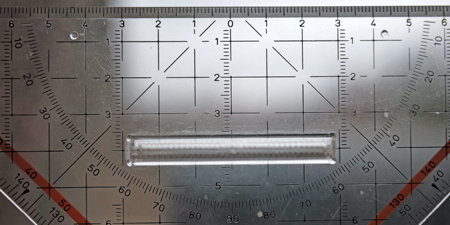 |
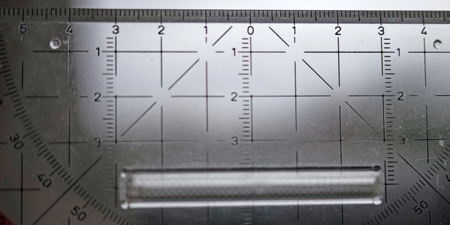 |
Photos: Test shots with Zeiss Biogon 35mm f/2.8 and Quenox Extension Tube for Leica M; distance set to infinity (left) or closest distance (right)
Test Shots: Zeiss Sonnar 50mm f/1.5
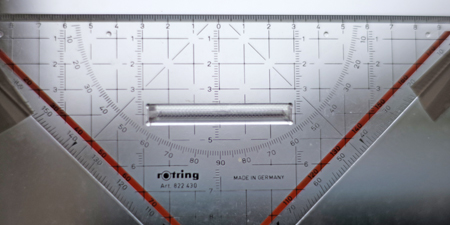 |
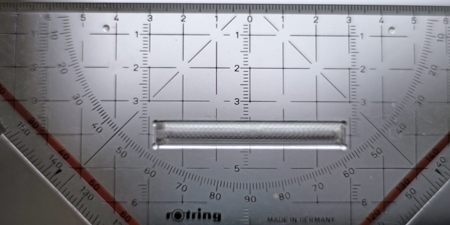 |
|
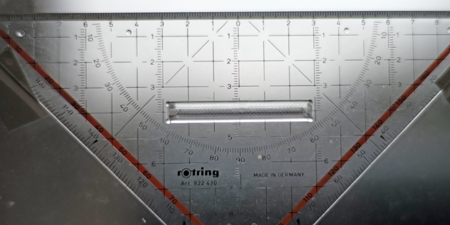 |
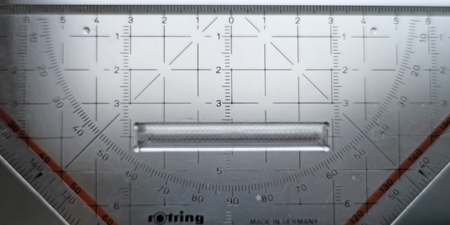 |
Photos: Test shots with Zeiss Sonnar 50mm f/1.5 and Quenox Extension Tube for Leica M; distance set to infinity (left) or closest distance (right); first test in top row, second test in bottom row
I performed two tests with the Zeiss Sonnar lens: a first preliminary test (photos in top row), and then a second test with many lenses, where it was also included (photos in bottom row). Both tests led to the same results.
Test Shots: Voigtländer Color Heliar 75mm f/2.5
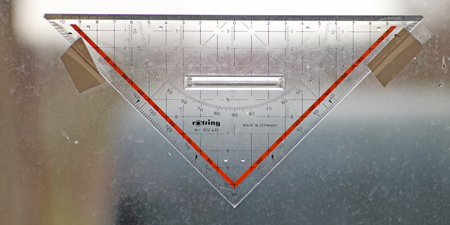 |
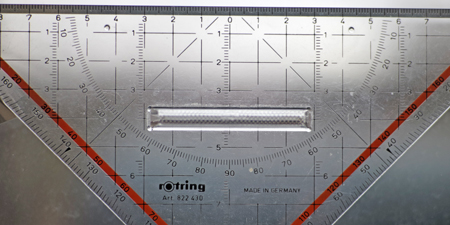 |
Photos: Test shots with Voigtländer Color Heliar 75mm f/2.5 and Quenox Extension Tube for Leica M; distance set to infinity (left) or closest distance (right)
Test Shots: Leitz Elmar-C 90mm f/4 (Leitz Tele-Elmarit 90mm f/2.8)
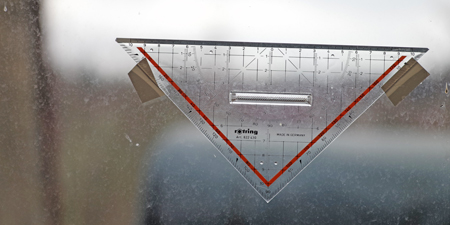 |
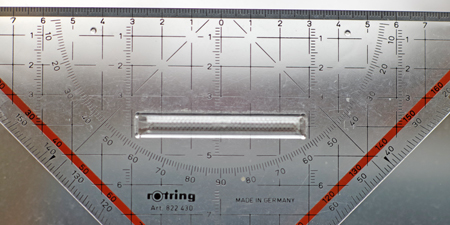 |
Photos: Test shots with Leitz Elmar-C 90mm f/4 and Quenox Extension Tube for Leica M; distance set to infinity (left) or closest distance (right)
Note: The Leitz Tele-Elmarit 90mm f/2.8 should deliver similar results (not tested yet)
Test Shots: Leitz Tele-Elmar 135mm f/4
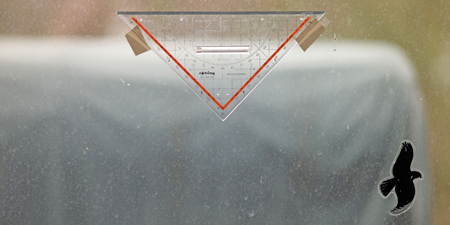 |
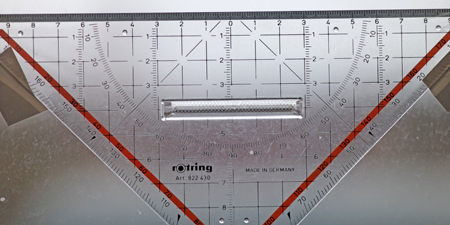 |
Photos: Test shots with Leitz Tele-Elmar 135mm f/4 and Quenox Extension Tube for Leica M; distance set to infinity (left) or closest distance (right)
Summary
The test demonstrates for the Quenox Extension Tube: the shorter the focal length, the greater the magnification, both when distance is set to infinity, as well as to the shortest possible value (where magnification is larger).
The three telephoto lenses (75 mm, 90 mm, 135 mm) should be used together with the extension tube only when distance is set to the closest value. Then all of them capture more or less an object of the size of a postcard (or a little bit more...). This may suffice, for example, for larger flowers.
The standard lens (50 mm) is in the "middle of nowhere", and delivers fuzzy (or hazy) images wide open. But this should improve when the lens is stopped down. Magnification is lower with the extension tube than for the Marumi +5 achromat, but distortion is also lower.
The two medium wide lenses (28 mm and 35 mm) achieve more magnification than the longer lenses, with an edge for the shorter Minolta lens. Maximum object width is in the range of about 10 cm for them. Still not earthshaking, but useful for flowers.
The wide lenses (25 mm, 24 mm, and 21 mm) finally come close to the "1:2 realm," but you have also to get fairly close to the object. I am not sure whether this is practical in real photo practice...
I did not test my widest lens (15 mm) because you have to get very close to the object with it. I prefer lenses where you can stay farther away from objects so that they are less disturbed.
While there is a slight light loss involved in using this extension tube, distortion is much lower than for the Marumi achromats. Thus, the extension tube should be preferred if magnification needs are not too high.
It should also be noted that the extension tube works with any lens, you need not worry about the filter thread (my Leitz Elmar-C 90mm f/4 has a non-standard filter thread) and filter diameter.
Combining Extension Tubes and Achromats
Of course, the idea to combine achromats with extensions came up. Admittedly, I did not expect these combinations to do miracles...
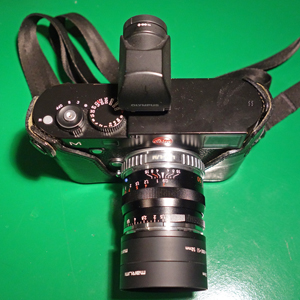 |
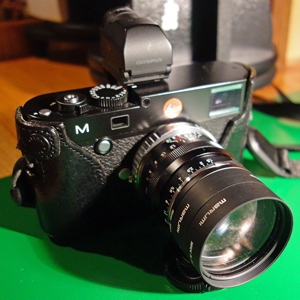 |
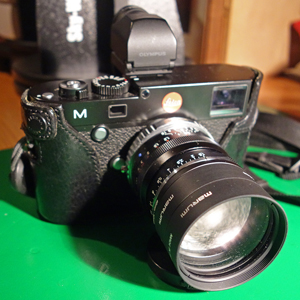 |
Photos: The "extreme" case - Quenox Extension Tube for Leica M plus two Marumi +5 achromats (and a 46-52 step-up ring) (click photos for larger versions)
So I did some quick-and-dirty tests with the Zeiss 50mm f/1.5 lens, the Quenox Extension Tube for Leica M, plus one or two Marumi +5 achromats (and a 46-52 step-up ring) (see photos above). Later, I repeated the test with the 50 mm, added first the 75 mm Voigtländer lens, and finally the 28 mm Minolta and 35 mm Zeiss lenses to the test. Below, I try to collect these tests into one table.
Calculating Magnification
I took quick-and-dirty test shots to calculate magnification for the following conditions:
- Lenses: Minolta M-Rokkor 28mm f/2.8 (40.5-43 mm and 43-52 mm step-up rings), Zeiss Biogon 35mm f/2.8 (43-52 mm step-up ring), Zeiss Sonnar 50mm f/1.5 (46-52 mm step-up ring)*, Voigtländer Color Heliar 75mm f/2.5 (43-52 mm step-up ring)
- Quenox Extension Tube for Leica M
- Diopters: +5 (1 Marumi +5 achromat), +10 (2 Marumi +5 achromats)
- Distance: closest and infinity
*) I did a first test with the Zeiss Sonnar 50mm f/1.5 alone. The results are shown below, but are nearly identical to the second test, which included more lenses.
Table with Results from First Test
The following table summarizes my results from the first test (it includes the Zeiss results without Quenox extension tube from above) and compares the data with the condition without Quenox Extension Tube:
Quenox Extension Tube for Leica M |
No Quenox Extension Tube for Leica M |
||||
Zeiss Sonnar 50mm f/1.5 |
Zeiss Sonnar 50mm f/1.5 |
Marumi +5 Achromat | |||
Distance |
Distance |
# Achrom. | Diopters | ||
| Infinity | 0.9 m (closest) | Infinity | 0.9 m (closest) | ||
| 180 mm 0.2 = 1:5 approx. 1:5* |
137 mm 0.26 = 1:3.8 approx: 1:4* |
--- | 592 x 395 mm 1:16.5 541 mm 1:15.1** |
0 | 0 |
| 72 mm 0.5 = 1:2 approx. 1:2 |
63 mm 0.568 = 1:1.76 approx: 1:1.75 |
130 mm 0.275 = 1:3.6 approx. 1:3.6 |
104 mm 0.344 = 1:2.9 approx: 1:3 |
1 | +5 |
| 46 mm 0.778 = 1:1.28 approx. 1:1.3 |
42 mm 0.85 = 1:1.17 approx: 1:1.2 |
67 mm 0.534 = 1:1.87 approx. 1:2 |
58 mm |
2 | +10 |
*) From test shots with Quenox Extension Tube alone above
**) From calculations and real word test photos (see page Close-Up
Behavior of the M-Mount Lenses)
Table with Results from Second Test
The following table summarizes my results from the second test:
Minolta M-Rokkor
28mm f/2.8 |
Zeiss Biogon 35mm f/2.8 |
Marumi +5 Achromat | |||
Distance |
Distance |
# Achrom. | Diopters | ||
| Infinity | 0.8 m (closest) | Infinity | 0.7 m (closest) | ||
| 103 mm 0.35 = 1:2.9 approx. 1:3* |
93 mm 0.385 = 1:2.6 approx: 1:2.5* |
125 mm 0.29 = 1:3.5 approx. 1:3.5* |
101 mm 0.35 = 1:2.8 approx: 1:3* |
0 | 0 |
| 103 mm 0.35 = 1:2.9 approx. 1:3 |
94 mm 0.38 = 1:2.6 approx: 1:2.5 |
122 mm 0.29 = 1:3.5 approx. 1:3.5 |
102 mm 0.35 = 1:2.85 approx: 1:3 |
0 | 0 |
| 71 mm 0.50 = 1:2 approx. 1:2 |
66 mm 0.54 = 1:1.8 approx. 1:1.8 |
72 mm 0.5 = 1:2.0 approx. 1:2 |
64 mm 0.56 = 1:1.8 approx. 1:1.8 |
1 | +5 |
| 57 mm 0.63 = 1:1.6 approx. 1:1.6 |
54 mm 0.66 = 1:1.51 approx: 1:1.5 |
52 mm 0.69 = 1:1.45 approx. 1:1 .5 |
48 mm 0.75 = 1:1.34 approx: 1:1.3 |
2 | +10 |
Zeiss Sonnar 50mm
f/1.5 |
Voigtländer
Color Heliar 75mm f/2.5 |
Marumi +5 Achromat | |||
Distance |
Distance |
# Achrom. | Diopters | ||
| Infinity | 0.9 m (closest) | Infinity | 1.0 m (closest) | ||
| 180 mm 0.2 = 1:5 approx. 1:5* |
137 mm 0.26 = 1:3.8 approx: 1:4* |
263 mm 0.14 = 1:7.3 approx. 1:7* |
158 mm 0.23 = 1:4.4 approx: 1:4.5* |
0 | 0 |
| 181 mm 0.2 = 1:5.1 approx. 1:5 |
137 mm 0.26 = 1:3.8 approx: 1:4 |
263 mm 0.14 = 1:7.3 approx. 1:7 |
159 mm 0.23 = 1:4.4 approx: 1:4.5 |
0 | 0 |
| 72 mm 0.5 = 1:2 approx. 1:2 |
62 mm 0.58 = 1:1.7 approx. 1:1.7 |
64 mm 0.56 = 1:79 approx. 1:1.8 |
54 mm 0.66 = 1:1.5 approx. 1:1.5 |
1 | +5 |
| 46 mm 0.778 = 1:1.28 approx. 1:1.3 |
42 mm 0.85 = 1:1.17 approx: 1:1.2 |
37 mm 0.97 = 1:1.0 approx. 1:1 |
33 mm 1.08 = 1:0.92 approx: 1:0.9 |
2 | +10 |
*) From test shots with Quenox Extension Tube alone above
Notes: Minimum object distance taken from the test shots below; maximum object size roughly estimated; magnification ratios calculated from the exact values via inverse function
Test Shots
Below are several series of test shots for illustration that I made with aperture wide open. Please note that they were only made for estimating magnification, not for demonstrating the achievable quality.
Minolta M-Rokkor 28mm f/2.8/28
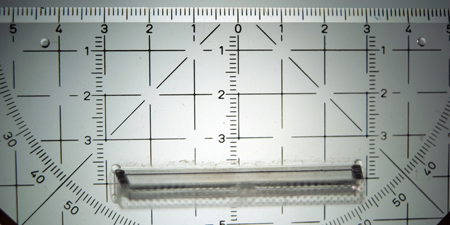 |
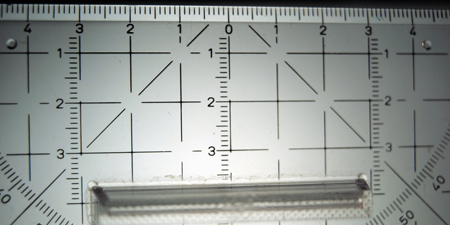 |
|
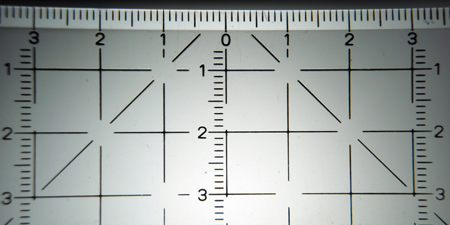 |
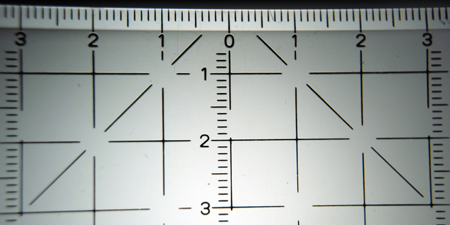 |
|
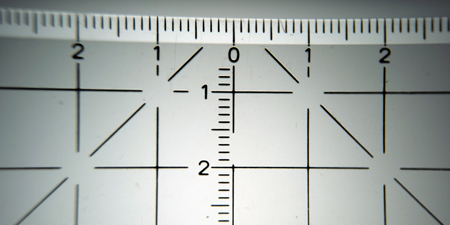 |
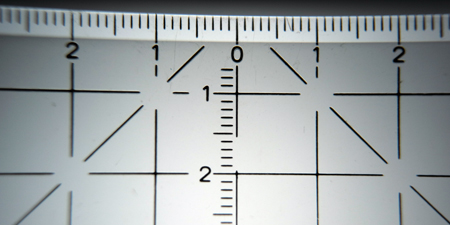 |
Photos: Test shots with Minolta M-Rokkor 28mm f/2.8, Quenox Extension Tube for Leica M, without achromat (top row), one +5 Marumi achromat (middle row), and two Marumi +5 achromats (= +10 diopters; bottom row); distance set to infinity (left column) or closest distance (right column)
Zeiss Biogon 35mm f/2.8
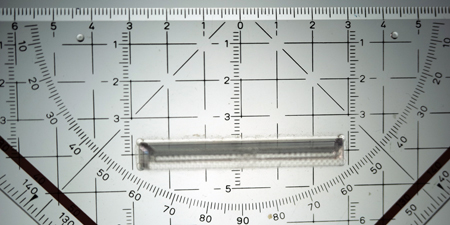 |
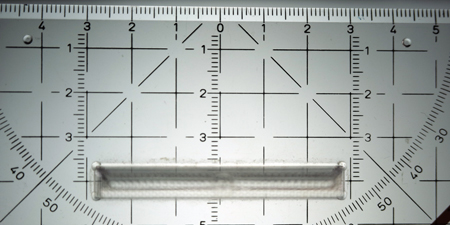 |
|
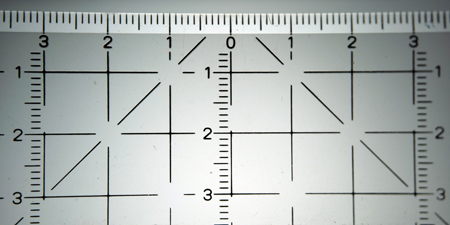 |
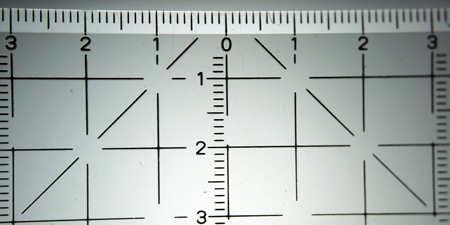 |
|
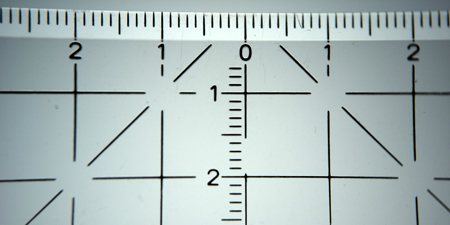 |
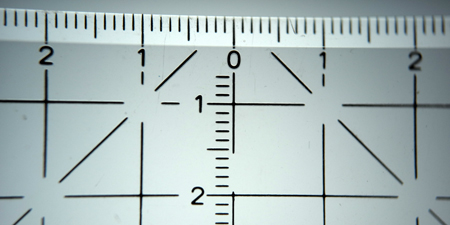 |
Photos: Test shots with Zeiss Biogon 35mm f/2.8, Quenox Extension Tube for Leica M, without achromat (top row), one +5 Marumi achromat (middle row), and two Marumi +5 achromats (= +10 diopters; bottom row); distance set to infinity (left column) or closest distance (right column)
Zeiss Sonnar 50mm f/1.5 (First Test)
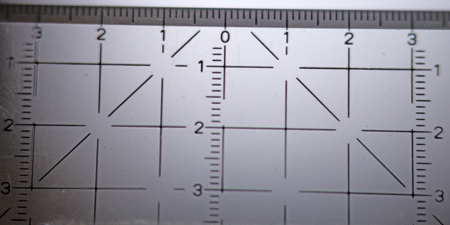 |
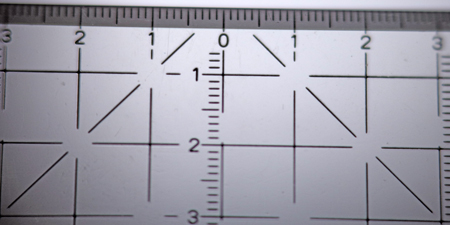 |
|
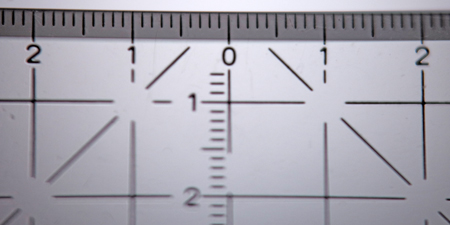 |
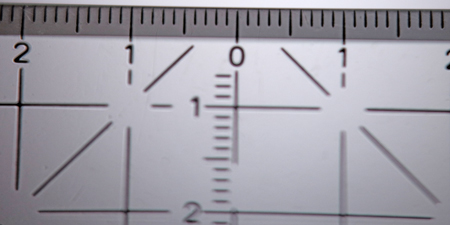 |
Photos: Test shots with Zeiss Sonnar 50mm f/1.5, Quenox Extension Tube for Leica M, and one +5 Marumi achromat (top row) and two Marumi +5 achromats (= +10 diopters; bottom row); distance set to infinity (left column) or closest distance (right column)
Zeiss Sonnar 50mm f/1.5 (Second Test)
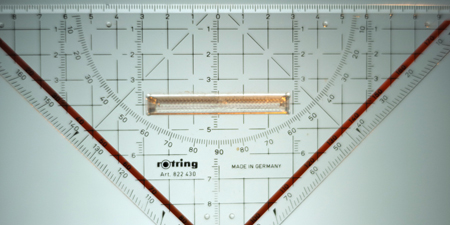 |
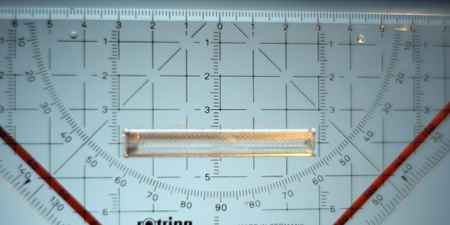 |
|
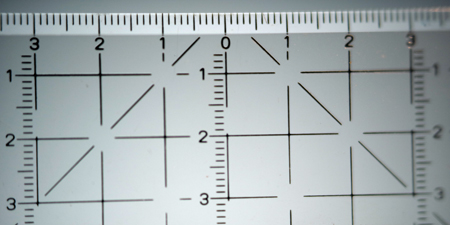 |
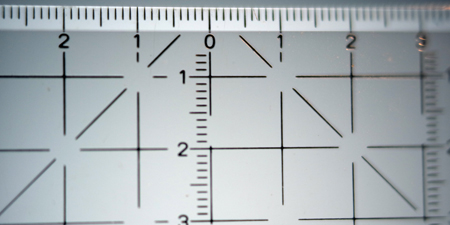 |
|
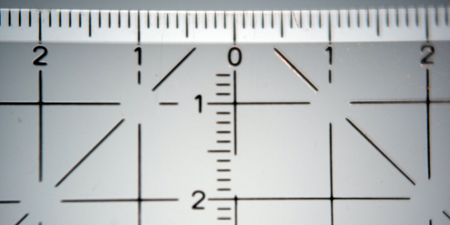 |
 |
Photos: Test shots with Zeiss Sonnar 50mm f/1.5, Quenox Extension Tube for Leica M, without achromat (top row), one +5 Marumi achromat (middle row), and two Marumi +5 achromats (= +10 diopters; bottom row); distance set to infinity (left column) or closest distance (right column)
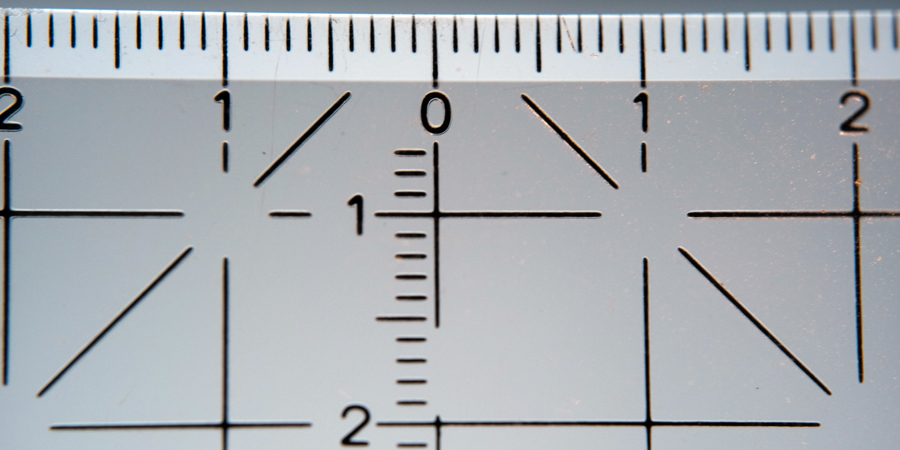
Photos: Test shot with Zeiss Sonnar 50mm f/1.5, Quenox Extension Tube for Leica M, and two +5 Marumi achromats (= +10 diopters); distance set to closest distance, aperture set to f/5.6
Voigtländer Color Heliar 75mm f/2.5
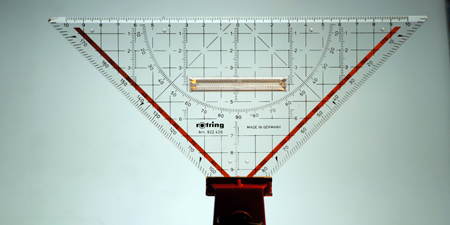 |
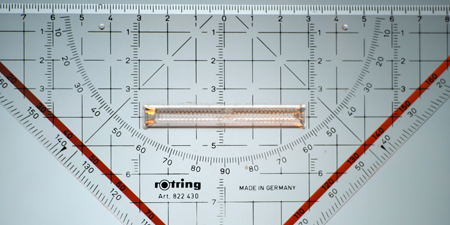 |
|
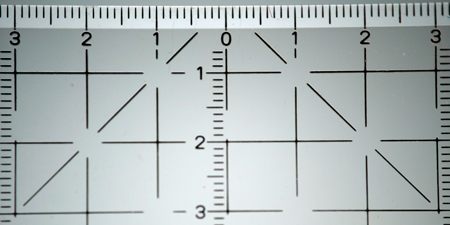 |
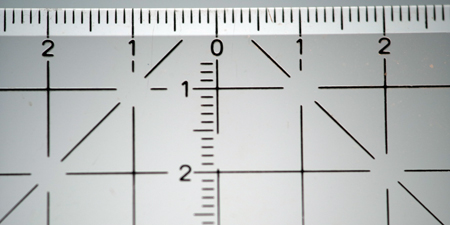 |
|
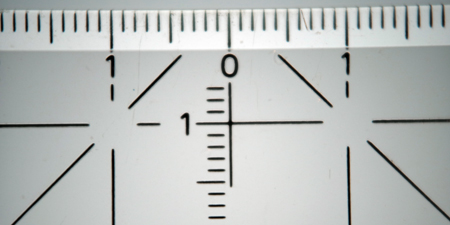 |
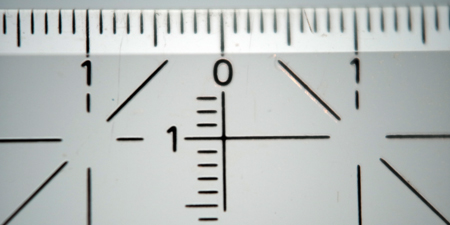 |
Photos: Test shots with Voigtländer Color Heliar 75mm f/2.5, Quenox Extension Tube for Leica M, without achromat (top row), one +5 Marumi achromat (middle row), and two Marumi +5 achromats (= +10 diopters; bottom row); distance set to infinity (left column) or closest distance (right column)
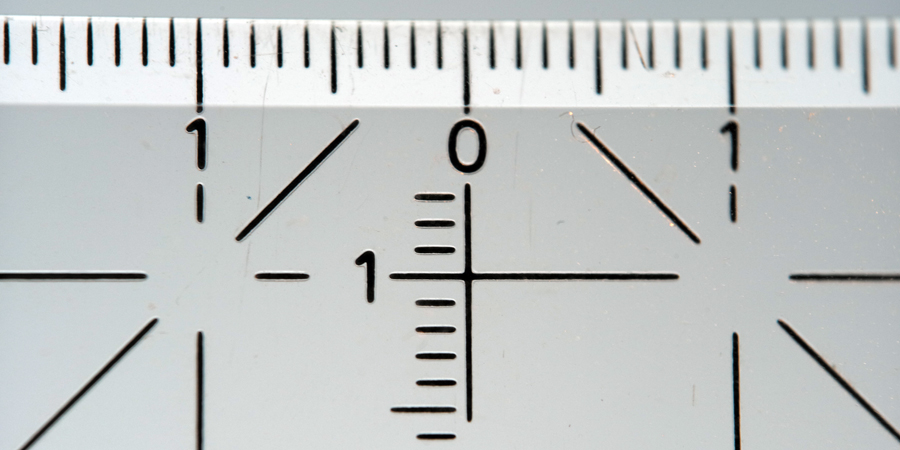
Photos: Test shot with Voigtländer Color Heliar 75mm f/2.5, Quenox Extension Tube for Leica M, and two +5 Marumi achromats (= +10 diopters); distance set to closest distance, aperture set to f/5.6
Summary
The photos seem to show a little less distortion when the extension tube is included in a setup with one or two achromats, but this may well be an artifact. Magnification is boosted when one achromat is used, but less so with two achromats.
The best combination seems to be to combine one Marumi +5 achromat with the Quenox Extension Tube. Interestingly, all tested lenses behave very similarly under this condition; only the Voigtländer lens has a slight edge. Real life tests should reveal, which combination delivers the better image quality. Magnification is in the region of 1:2 here. If you use two achromats with this lens, you come even into the 1:1 realm...
But again, maybe that all these combinations are unusable from an image quality point of view in the end... Real life tests are needed to explore this question.
Test shots taken with an aperture value of f/5.6 show that image quality improves when the lenses are stopped down. This is also important when using these combinations for real-life close-up shots.
Conclusions
Brief Tabular Summary
| Lens |
Quenox
Extension
Tube for
Leica M
|
|
No Quenox
Extension Tube for Leica M
|
Marumi +5 |
|||
Distance |
Distance |
Achromats |
|||||
| Infinity | 0.8 m (closest) | Infinity | 0.8 m (closest) | # | Diopters | ||
Minolta M-Rokkor 28mm
f/2.8 |
103 mm 0.35 = 1:2.9 approx. 1:3* |
94 mm 0.38 = 1:2.6 approx: 1:2.5* |
--- | 951 x 634 1:26.4* 829 mm > 1:23.2** |
0 | 0 | |
| 71 mm 0.50 = 1:2 approx. 1:2 |
66 mm 0.54 = 1:1.8 approx. 1:1.8 |
225 mm 0.16 = 1:6.3 approx. 1:6.5 |
176 mm 0.2 = 1:4.9 approx: 1:5 |
1 | +5 | ||
| 57 mm 0.63 = 1:1.6 approx. 1:1.6 |
54 mm 0.66 = 1:1.51 approx: 1:1.5 |
110 mm 0.325 = 1:3.1 approx. 1:3 |
101 mm 0.35 = 1:2.8 approx. 1:2.8 |
2 | +10 | ||
Zeiss Biogon 35mm f/2.8 |
Infinity | 0.7 m (closest) | Infinity | 0.7 m (closest) | # | Diopters | |
| 122 mm 0.29 = 1:3.5 approx. 1:3.5* |
102 mm 0.35 = 1:2.85 approx: 1:3* |
--- | 652 x 434 1:18* 587 mm > 1:16.4** |
0 | 0 | ||
| 72 mm 0.5 = 1:2.0 approx. 1:2 |
64 mm 0.56 = 1:1.8 approx. 1:1.8 |
180 mm 0.2 = 1:5.0 approx. 1:5 |
139 mm 0.26 = 1:3.9 approx. 1:4 |
1 | +5 | ||
| 52 mm 0.69 = 1:1.45 approx. 1:1.5 |
48 mm 0.75 = 1:1.34 approx: 1:1.3 |
90 mm 0.4 = 1:2.5 approx. 1:2.5 |
79 mm 0.45 = 1:2.2 approx. 1:2.2 |
2 | +10 | ||
Zeiss Sonnar 50mm f/1.5 |
Infinity | 0.9 m (closest) | Infinity | 0.9 m (closest) | # | Diopters | |
| 181 mm 0.2 = 1:5 approx. 1:5* |
137 mm 0.26 = 1:3.8 approx: 1:4* |
--- | 592 x 395 1:16.5* 541 mm > 1:15.1** |
0 | 0 | ||
| 72 mm 0.5 = 1:2 approx. 1:2 |
63 mm 0.568 = 1:1.76 approx: 1:1.75 |
130 mm 0.275 = 1:3.6 approx. 1:3.6 |
104 mm 0.344 = 1:2.9 approx: 1:3 |
1 | +5 | ||
| 46 mm 0.778 = 1:1.28 approx. 1:1.3 |
42 mm 0.85 = 1:1.17 approx: 1:1.2 |
67 mm 0.534 = 1:1.87 approx. 1:1.9 |
58 mm 0.617 = 1:1.6 approx. 1:1.6 |
2 | +10 | ||
Voigtländer Color
Heliar 75mm f/2.5 |
Infinity | 1.0 m (closest) | Infinity | 1.0 m (closest) | # | Diopters | |
| 263 mm 0.14 = 1:7.3 approx. 1:7* |
159 mm 0.23 = 1:4.4 approx: 1:4.5* |
--- | 444 x 296 1:12* 391 mm > 1:10.9** |
0 | 0 | ||
| 64 mm 0.56 = 1:1.79 approx. 1:1.8 |
54 mm 0.66 = 1:1.5 approx. 1:1.5 |
92 mm 0.39 = 1:2.56 approx. 1:2.5 |
72 mm 0.5 = 1:2 approx. 1:2 |
1 | +5 | ||
| 37 mm 0.97 = 1:1.0 approx. 1:1 |
33 mm 1.08 = 1:0.92 approx: 1:0.9 |
47 mm 0.76 = 1:1.3 approx. 1:1.25 |
40 mm 0.895 = 1:1.12 approx. 1:1.1 |
2 | +10 | ||
Table: Overview of achievable magnifications for the lenses that are most relevant for close-up photography with tools (lenses, tubes)
*) Very similar results were obtained in a test where only the Quenox Extension
Tube was regarded
*) Calculated for 35.8 mm according
to a simple formula based on of angle of view (technical data) and shortest
distance (technical data);
**) Adapted
to the Leica M's sensor width of 35.8 mm (instead of 36 mm), object widths
taken from test photos (see page Close-Up Behavior
of the M-Mount Lenses)
Combining the Table with what Is Useful...
|
Lens
|
Quenox Extension
Tube for Leica M |
No Quenox Extension
Tube for Leica M |
Marumi +5 |
||||
Distance |
Distance |
Achromats |
|||||
| Infinity | 0.8 m (closest) | Infinity | 0.8 m (closest) | # | Diopters | ||
Minolta M-Rokkor 28mm f/2.8 |
103 mm approx. 1:3 |
94 mm approx: 1:2.6 |
--- | --- | 0 | 0 | |
| 71 mm approx. 1:2 |
66 mm approx. 1:1.8 |
--- | --- | 1 | +5 | ||
Zeiss Biogon 35mm f/2.8 |
Infinity | 0.7 m (closest) | Infinity | 0.7 m (closest) | # | Diopters | |
| 122 mm approx. 1:3.5 |
102 mm approx: 1:3* |
--- | --- | 0 | 0 | ||
| 72 mm approx. 1:2 |
64 mm approx. 1:1.8 |
180 mm approx. 1:5 |
139 mm approx. 1:4 |
1 | +5 | ||
Zeiss Sonnar 50mm f/1.5 |
Infinity | 0.9 m (closest) | Infinity | 0.9 m (closest) | # | Diopters | |
| 181 mm approx. 1:5 |
137 mm approx: 1:4 |
--- | --- | 0 | 0 | ||
| 72 mm approx. 1:2 |
63 mm approx: 1:1.75 |
130 mm approx. 1:3.6 |
104 mm approx: 1:3 |
1 | +5 | ||
| 46 mm approx. 1:1.3 |
42 mm approx: 1:1.2 |
67 mm approx. 1:2 |
58 mm approx. 1:1.6 |
2 | +10 | ||
Voigtländer Color
Heliar 75mm f/2.5 |
Infinity | 1.0 m (closest) | Infinity | 1.0 m (closest) | # | Diopters | |
| 64 mm approx. 1:1.8 |
54 mm approx. 1:1.5 |
92 mm approx. 1:2.5 |
72 mm approx. 1:2 |
1 | +5 | ||
| 37 mm approx. 1:1 |
33 mm approx: 1:0.9 |
47 mm approx. 1:1.25 |
40 mm approx. 1:1.1 |
2 | +10 | ||
Table: Overview of achievable magnifications for the lenses that are most useful for close-up photography with tools (lenses, tubes)
In terms of lenses and options, we get the following useful combinations:
- Minolta M-Rokkor 28mm f/2.8: Quenox Extension Tube for Leica M alone or with one +5 achromat/close-up lens
- Zeiss Biogon 35mm f/2.8: Quenox Extension Tube for Leica M with or without one +5 achromat/close-up lens; one +5 achromat or close-up lens
- Zeiss Sonnar 50mm f/1.5: Quenox Extension Tube for Leica M with no, one, or two +5 achromats/close-up lenses; one or two +5 achromats/close-up lenses
- Voigtländer Color Heliar 75mm f/2.5: One or two +5 achromats/close-up lenses with or without Quenox Extension Tube for Leica M
Other combinations deliver too low magnifications or too strong distortions.
As a rule of thumb, put the Quenox Extension Tube for Leica M in your camera bag and one or two +5 achromats/close-up lenses. And use them only in combination with the lenses listed above (or lenses of corresponding focal lenghts).
Another rule of thumb is that two +5 achromats/lenses should only be used for focal lengths of 50 mm and longer. Better achromats may also be used in combination with shorter focal lengths, but I cannot comment on this.
Short Summary
Close-up lenses and achromats are most effective from a focal length of 50 mm on and longer - without doing miracles, however. But in comparison with the close-up behavior of the "pure" lenses, the boost is nevertheless remarkable. Regrettably, the samples show strong to medium pincushion distortion, which decreases somewhat with increasing focal length. Pincushion distortion increases when lenses are stacked. Better achromats such as the Leica Elpros may cause a lot lower pincushion distortion, but I cannot comment on this, since I do not own an Elpro and cannot verify this.
The Quenox Extension Tube, on the other hand, is the more effective, the shorter the focal length is. Used alone, it is again interesting from a focal length of 50 mm on and shorter. However, when the lens is too wide, you have to get very close to the object, and the perspective may also not be optimal. Distortion seems to be much lower when using extension tubes than for close-up lenses.
Lenses and the Quenox Extension Tube can be combined, but I would not stack lenses in this case. Using the tube and one +5 lens let's you enter the 1:2 realm with a 50 mm lens. Distortion might be a little bit lower when a lens is combined with an extension tube.
Thus far, the results that I have got are not very encouraging with respect to image quality. But stopping the lens down improves vignetting behavior and overall image quality (albeit not distortions), as a few test shots indicate.
Close-up Lenses versus Extension Tubes/Bellows
I found an interesting difference between close-up lenses and extension tubes (and bellows):
- Close-up lenses: The magnification effect of close-up lenses is the stronger, the longer the focal length of the lens is. That is, for lenses below a focal length of 50 mm magnification is fairly low. It is highest for the 75 mm lens (I was not able to test my 90 mm and 135 mm lens)
- Extension tubes: The magnification effect of extension tubes is the stronger, the shorter the focal length of the lens is. That is, for lenses above a focal length of 50 mm magnification is fairly low. It is highest for the 21 mm lens.
Another interesting difference between close-up lenses and extension tubes that I found is:
- Close-up lenses lead to much stronger (pincushion) distortions than extension
tubes.
I do not know whether the distortions are caused by my specific close-up lenses/achromats in combination with my lenses, or whether this is a general phenomenon*.
And another difference was already known to me:
- Close-up lenses do not cause a light loss, whereas extension tubes do: the longer the extension, the more light is lost.
It should also be noted that the extension tube works with any lens, you need not worry about the filter thread (my Leitz Elmar-C 90mm f/4 has a non-standard filter thread) and filter diameter.
*) Leitz delivered high quality achromats (the Elpro series), and I did not find any reports on strong distortions.
Final Word
Sample photos taken with close-up lenses or acromats and extension tubes are presented on page Close-Up Options (Live View) - Part 5: Samples I.
The "practice" section continues with page Close-Up Options (Live View) - Part 3: Practice II, which discusses my practical experiences with extension bellows.
References
Extension Tubes
- Novoflex: Extension tube set Leica M (www.novoflex.com/en/products/adapters/extension-tube-set-leica-m/) / Zwischenringsatz Leica M (www.novoflex.com/de/produkte/objektiv-adapter/zwischenringsatz-leica-m/)
- enjoyyourcamera: Quenox Zwischenring für Leica M - ersetzt Leica OUFRO bzw. Leitz 16469Y (http://www.enjoyyourcamera.com/Makrozubehoer/Makro-Zwischenringe/Quenox-Zwischenring-fuer-Leica-M-ersetzt-Leica-OUFRO-bzw-Leitz-16469Y::6791.html)
Extension Bellows
- Novoflex Company Website (www.novoflex.com/en/home (English), www.novoflex.com/de/home (German))
- Novoflex: Adapted bellow systems for the Leica M (Typ 240) and S (Universal-Balgengeräte für Leica M240 und Leica S) (www.novoflex.com/de/produkte/makrofotografie--blitztechnik/balgengeraete/universal-balgengeraete-fuer-leica-neu (German only))
| 04.07.2024 |